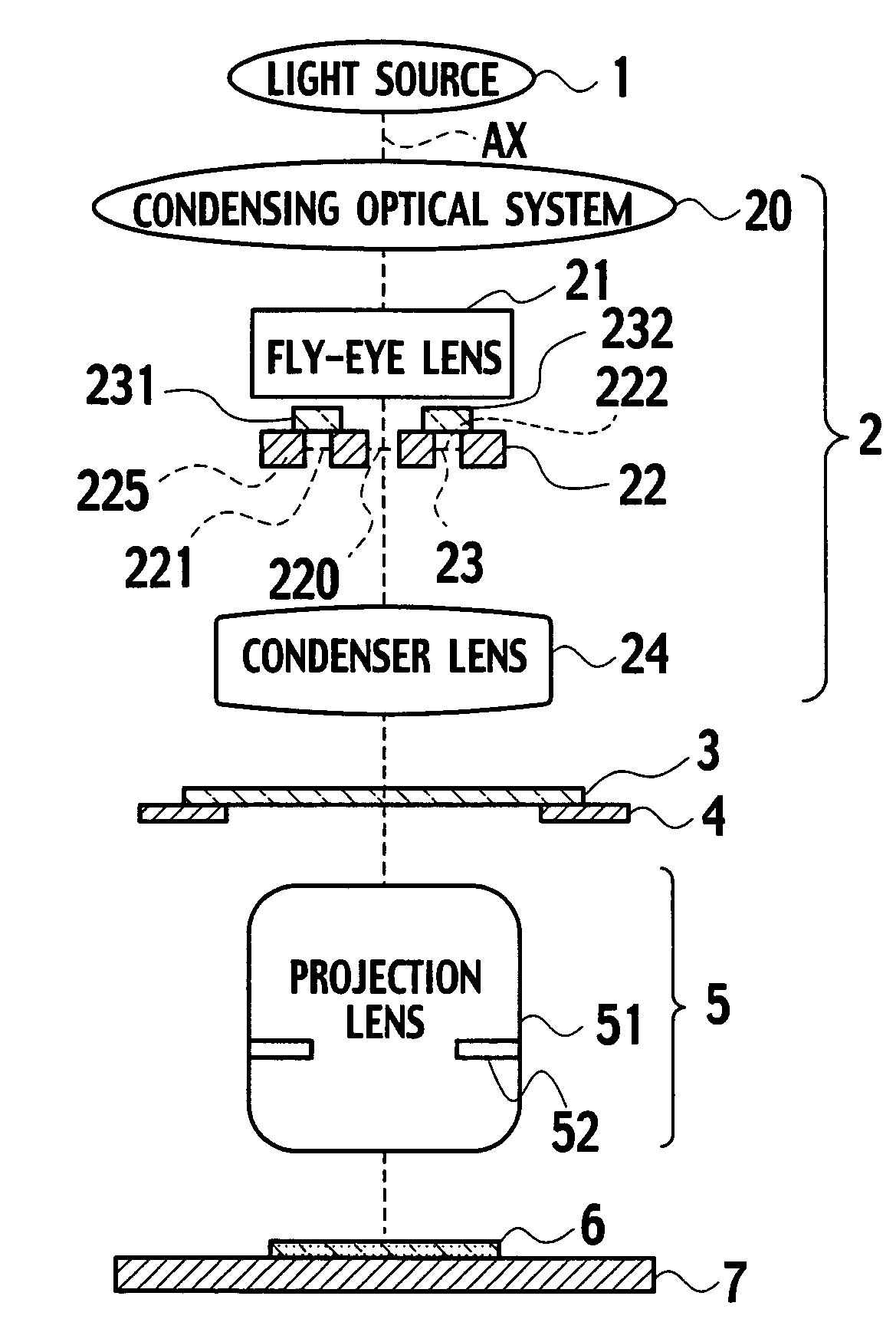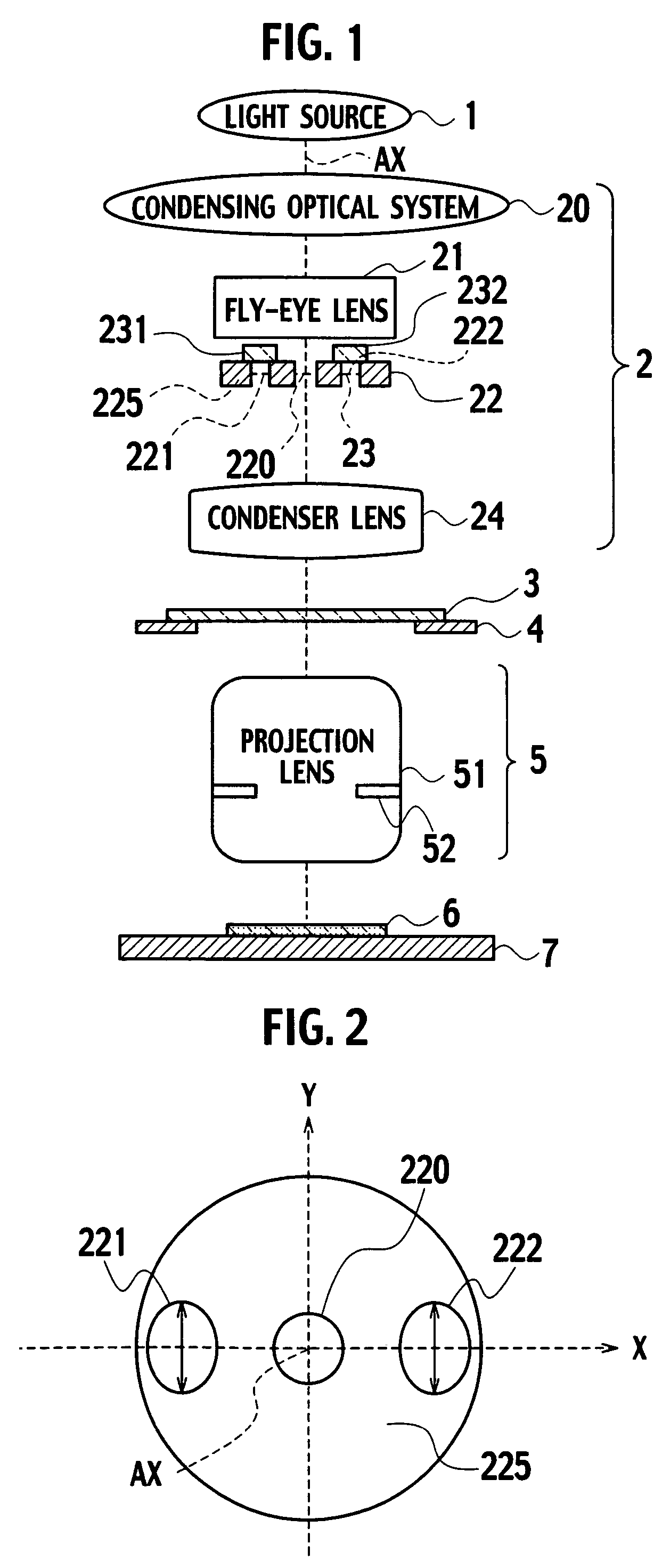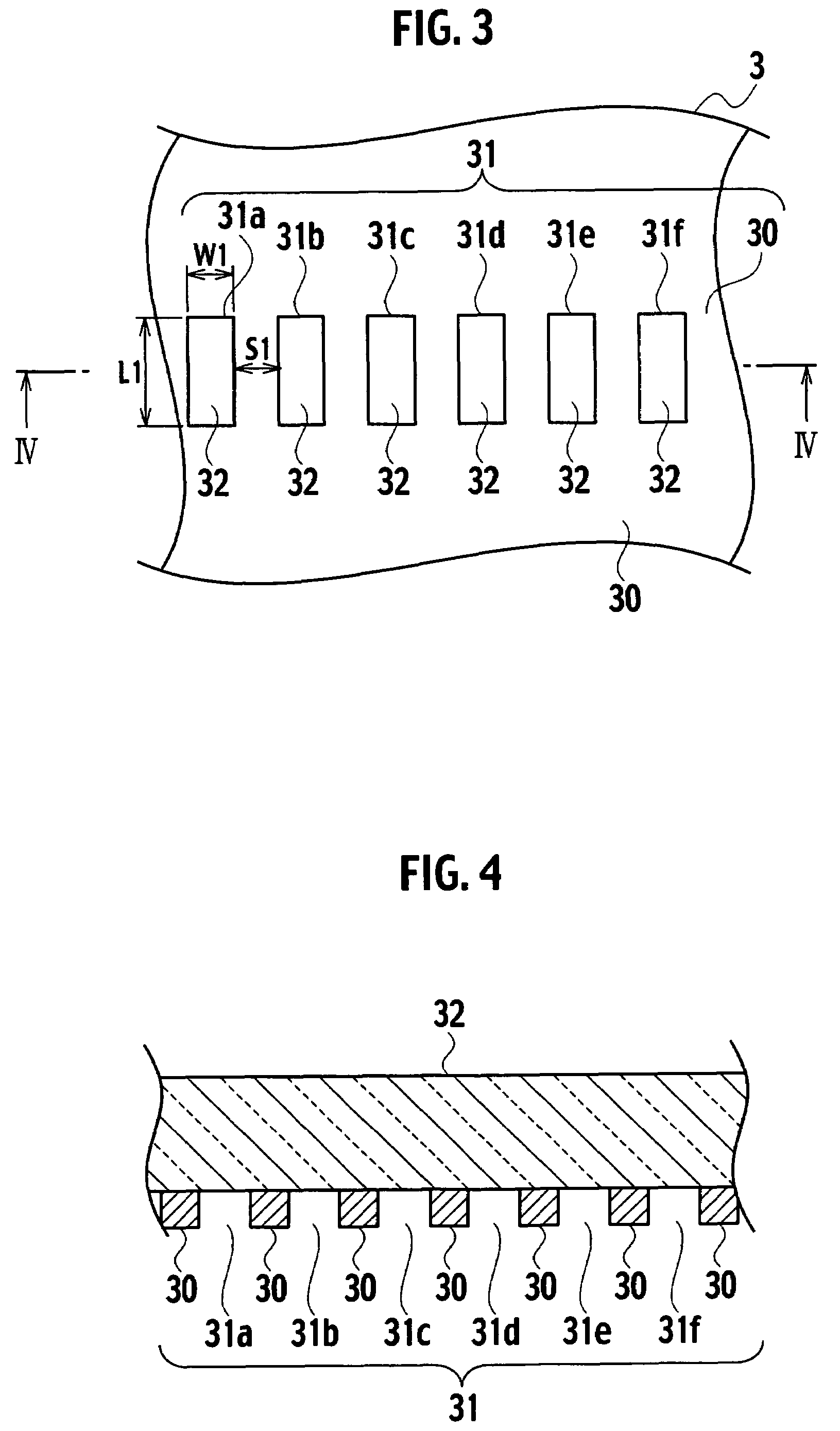Exposure system, exposure method and method for manufacturing a semiconductor device
a semiconductor and exposure system technology, applied in the field of semiconductor device manufacturing technology, can solve the problems of increasing the dimensional variation of the resist pattern, difficult to form fine resist patterns, and inability to obtain sufficient process windows in some cases
- Summary
- Abstract
- Description
- Claims
- Application Information
AI Technical Summary
Benefits of technology
Problems solved by technology
Method used
Image
Examples
first modification
(First Modification)
[0082]In a first modification of the embodiment of the present invention, the vibration direction of the electric vectors of the light emitted from the light source 1, shown in FIG. 1, is extended in the perpendicular direction (Y-axis direction) to the straight line passing through the first and second eccentric regions 221 and 222, shown in FIG. 2. As shown in FIG. 15, a quarter wave plate 250 is placed in the optical path of the light passing through the center region 220 of the effective illumination source plane 23 in a plane conjugate with the effective illumination source plane 23. The quarter wave plate 250 changes the incident linearly polarized light into circularly polarized light. As shown in FIG. 2, therefore, in the effective illumination source plane 23, obliquely incident light which is linearly polarized such that the vibration direction of the electric vectors is extended in the isolation direction of the mask pattern 31 are formed by each of th...
second modification
(Second Modification)
[0086]In a second modification of the embodiment of the present invention, a description is given of an example, in which, as shown in FIG. 18, the vibration directions of the electric vectors of the perpendicularly incident light passing through the center region 220 is equal to the parallel direction (X-axis direction) to the straight line connecting the first and second eccentric regions 221 and 222. As shown in FIG. 19, a half wave plate 260 is placed in the optical path passing through the center region 220 of the effective illumination source plane 23 in a plane conjugate with the effective illumination source plane 23. The half wave plate 260 rotates the vibration directions of the electric vectors of incident linear polarized light by 90 degrees.
[0087]In the effective illumination source plane 23, as shown in FIG. 18, the perpendicularly incident light passing through the center region 220 is linearly polarized. The vibration direction of the electric ve...
third modification
(Third Modification)
[0091]In a third modification of the embodiment of the present invention, as shown in FIG. 21, a description is given of an example in which the photoresist 3 includes patterns 331, 332, and 333 of various shapes in addition to the mask pattern 31 with the openings 31a to 31f. The pattern 331 shown in FIG. 21 is a thin line pattern extending in the isolation direction of the openings 31a to 31f. The pattern 332 is a rectangular pattern. The pattern 333 is a thin line pattern extending in the cyclic direction of the openings 31a to 31f.
[0092]In the projection exposure using the photomask 3 shown in FIG. 21, using the tripole illumination shown in FIGS. 2 and 18, the exposure latitude with respect to the dimension in the isolation direction is different from the exposure latitude with respect to the dimension in the cyclic direction, resulting in problems. This is because the illumination is different between the isolation direction of the openings 31a to 31f and ...
PUM
| Property | Measurement | Unit |
|---|---|---|
| wavelength | aaaaa | aaaaa |
| wavelength | aaaaa | aaaaa |
| wavelength | aaaaa | aaaaa |
Abstract
Description
Claims
Application Information
 Login to View More
Login to View More - R&D
- Intellectual Property
- Life Sciences
- Materials
- Tech Scout
- Unparalleled Data Quality
- Higher Quality Content
- 60% Fewer Hallucinations
Browse by: Latest US Patents, China's latest patents, Technical Efficacy Thesaurus, Application Domain, Technology Topic, Popular Technical Reports.
© 2025 PatSnap. All rights reserved.Legal|Privacy policy|Modern Slavery Act Transparency Statement|Sitemap|About US| Contact US: help@patsnap.com



